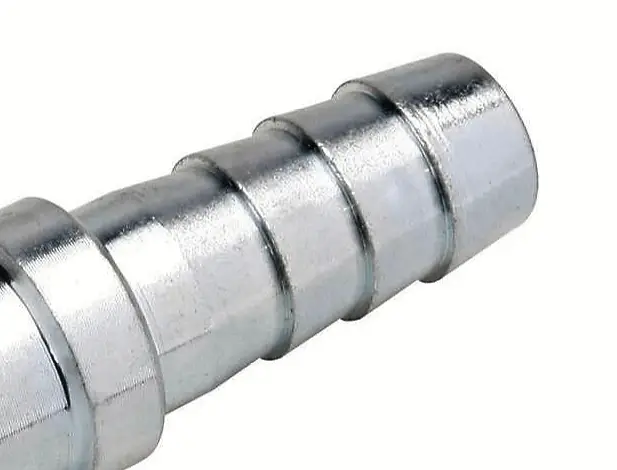Many wonder if an airbrush specific for makeup can be used with paint, Or if an airbrush specific for paint can be used with makeup. And I’m not surprised as to why this question comes up so often.
I mean, what are the differences between the two that make it possible or impossible to cross contaminate paint with makeup, or makeup with paint?
First of all,
You see, I’m from the paint side of airbrush work. However, I have heard the question often as to if you can take a makeup specific airbrush and use it with paint, or vice versa.
This has made me very curious as well, so I did some digging and thought I’d share my findings with you!
The Major Differences
Makeup Airbrush Vs Paint Airbrush
Most common Airbrush Makeup Kits designed for the home user, are typically equipped with an airbrush, a compressor, along with some makeup.
Now, I have noticed while digging through the different options out there, that a lot of the airbrush makeup kits come with an airbrush that can also
Paint Vs Makeup Compressor Differences
However, the major difference I have found between the makeup side of airbrushing and the paint side is the compressor options.
It is quite common to find a makeup airbrush compressor that does not exceed 15 PSI. Meaning, the max Pounds per square inch that can come from
Now, if we compare that to a (marketed as) paint specific airbrush kit. Its common to see those cheaper compressors able to output somewhere between 40 – 60 PSI and up (depending on the compressor specs).
This draws me to the conclusion that the biggest differences between the makeup airbrush, and the paint airbrush lies in the compressor specs rather then the airbrush its self.
Granted, there are airbrush outliers both on the paint and makeup side that may not be able to be used with the opposite side. Whether it be limitations in the design, or simply an in ability to disassemble the airbrush for
Airbrush Specific Differences
Now, I want to talk more about the subtle differences I have found while comparing the airbrushes available on the market at the time of writing. I’ll be looking at options both on the paint and makeup side. I’m looking for both
Needle Size
I have found it quite common for an airbrush being sold in a makeup kit to
Now, It does make sense for a makeup airbrush to come with a needle of
The second conclusion I have come to that is specific to why (marketed as) makeup specific airbrushes are typically equipped with a larger needle is that, makeup tends to be thicker then properly thinned paint. To which, requires the larger needle size in order to flow the makeup properly.
If this is the case, then properly thinned paint should flow just fine through
But maybe makeup airbrushes utilize the larger needle simply for the fact that they are intended for lower PSI use.
Hose Connection
Another subtle, but impactful observation I made was the air hose connection on most makeup airbrushes.
It was very common to see a barbed hose connector on the makeup airbrushes. Where as on the paint side of things its common to see a threaded connection, or (added on) quick connect option. (Image Of Barbed Hose Fitting Below)

This brings me to the conclusion that an airbrush with a “barbed hose connector” may not be able to maintain connection with the air hose if
Disassembly
For the most part, if you are using a reputable brand of airbrush. Odds are you should be able to disassemble the airbrush far enough that you can give it a proper deep clean.
However, some makes and models may not give you this option. If this is the case, it’s likely best not to cross contaminate the airbrush say from paint to makeup, or makeup to paint.
This is more of an issue when trying to use a makeup airbrush with paint. Because paint will either cure, or dry to a hard finish depending on the type of paint you are using.
Either way dried paint inside an airbrush can be difficult to remove. Especially if you are unable to disassemble the airbrush to the point you can reach the dried paint.
Commonalities Between Makeup Airbrushes & Paint Airbrushes
Some commonalities I have found between the (marketed as) makeup airbrush, and paint airbrush.
Shape & Design
I have found it rather consistent to see the exact same shape and design of airbrush to be marketed as a paint specific airbrush by one seller, and makeup specific airbrush by another seller.
Now, this doesn’t go for all airbrushes. As I did notice a few designs that I hadn’t seen on the paint side of airbrushing. However, for the most part they look the same.
The major differences I noticed are listed above.
My Thoughts
Based on my analysis of the makeup airbrush, and the paint airbrush. I have come to the conclusion that cross use between paint & makeup can be done with a majority of the airbrushes out there. But likely not all.
As an example, while researching this topic I came across an Airbrush & Compressor kit on amazon (You Can Check It Out Here), that was being marketed on a makeup blog as a Makeup airbrush kit.
After some simple analysis I quickly recognized the airbrush being sold with the compressor was an Iwata Revolution. I have seen that brush used by many in the painting industry.
So, I did some digging to see if I could find any people using the Iwata Revolution for makeup. Sure enough, I found a video of a woman demonstrating how to clean makeup out of it…
This is what sold me most on the idea that their isn’t much difference between a makeup airbrush, and a paint airbrush. Other then the slight differences in common needle size, and hose connections. (At least from the
Well that, and the fact that I found a source that stated exactly as follows on their FAQ’s page:
Do I need an airbrush designed for airbrush makeup?
No. There’s nothing special about the airbrush and I don’t know of any airbrush specifically made for makeup application. The Kryolan Vega (which we sell) is time proven with over a decade of use in the makeup industry (but it won’t work if you put the wrong needle in it.)
Source
Rather, the major differences were in the compressors. You see, like stated above, the “makeup specific” air compressors were limited to a max output of 15 PSI. Where as a majority of the “Paint specific” air compressors were able to reach 35 PSI output and up.
The reason behind why “makeup specific” airbrush compressors max out at
It can be quite harmful to be spraying pressurized air directly at your skin. So, I believe, the manufacturers put say a “governor” on the “makeup specific” compressors to keep their users safe.
But if you wanted to use the makeup airbrush and compressor kit for painting, then odds are you will not have enough PSI to atomize the paint correctly.
So, Can You Use A Makeup Airbrush For Paint?
Well, based on my findings.
However, you may need to find a different compressor for the job, and possibly a new hose connector if the airbrush you intend on using has been equipped with a barbed hose connector (as seen above). Such as a threaded,
Next, you should consider a new / different compressor if the one you have is specific to makeup use, based on the fact of pressure output. Odds are you will require a greater amount of pressure then simply 15 PSI.
And, I’m assuming you’d rather not damage the compressor you have by pushing it to its limits?
If you’d like a compressor recommendation for airbrushing with paint then be sure to check out my latest compressor recommendation for details!
If you are going to try using paint with a “Makeup” airbrush then you need to ensure you are able to achieve the following
It’s important you know how to properly thin paint for an
But most likely,
The biggest issue you will run into if you are using a makeup specific airbrush for paint is the fact that the compressor that came with
Simply a different compressor could be all you need to be up and spraying paint.
Can You Use A Paint Airbrush For Makeup?
Based on my conclusions above, It’s likely okay to use a paint specific airbrush for makeup. You will only need to make minor modifications such as, change the needle size if smaller than 0.4mm, and ensure your
But, I did notice the majority of options available on the makeup side were gravity feed airbrushes, both in single action and double action. This makes me believe, that siphon feed, and side feed airbrush models are not ideal for makeup work.
Now, for safety purposes, I would suggest you opt for a compressor that
You see, airbrushing makeup at pressures above 15 PSI can become dangerous. As pressurized air is known to be harmful when in direct contact with the skin, especially at close distance, and at
Oh, And I would strongly recommend you avoid using an airbrush for makeup that was previously used for spraying solvent based paints, or had a history of being used with any sort of harsh chemicals.
Conclusion
Based on my research I have come to the conclusion that, the majority of airbrushes being marketed as “makeup specific” and “paint specific” tent to be the same airbrushes, just with different branding, or different kit options and specs.
The real difference between a “paint specific” airbrush kit, and a “makeup specific” one is in the air compressor specs.
Most commonly you will see a makeup airbrush kit being sold with a compressor that is unable to output a PSI greater than 15 PSI. This is mostly for safety purposes, as it can be dangerous to be spraying compressed air directly at your skin.
In order to limit the potential for bodily harm. Manufacturers have limited the air output on makeup and cosmetic specific airbrush compressors.
Now, a “paint specific” airbrush compressor is designed to output upwards of 35 PSI plus. This is because airbrushing paint requires a greater amount of airflow in order to function properly.
All in all, “makeup specific” airbrushes are typically the same as “paint specific” ones. Other than subtle details that can be swapped to change tasks.
Now, I’ve got to be completely honest with you. I have never personally tried to use a makeup airbrush that was purchased specifically for makeup work to use with paint, or vice versa. However, based on the research I have done, and the commonalities I have noticed. For the most part the compressor is the largest difference between the makeup side, and the paint side. Compressors designated for makeup use, typically are set to function at much lower PSI then what you would see used when working with paint.
Anyway, I hope you were able to find some value here! If you have any further questions regarding the airbrush do be sure to take a look around the website. Airbrush Insider is dedicated to helping all in the airbrush community!
This is Colt signing off!
Check Out Some Of My Favorite Airbrush Equipment:

